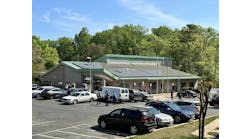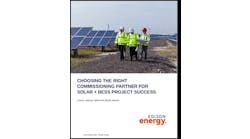The Air Force is doing market research on energy resilience as part of a larger effort through 2030 to also optimize demand and assure supply, a plan that includes microgrids.
Its Office of Energy Assurance (OEA) issued an open request for information (RFI) last week that seeks industry guidance in collecting technical and financial data, as well as examples of innovative projects. The Air Force intends to use the information to eventually develop projects.
The military branch hopes to eliminate 20 percent of the single points of energy failure within its critical infrastructure by 2025, a goal it set out in 2017-2030 energy plan. By 2036, it hopes to have a reliable energy supply for all mission critical functions at all times.
Microgrids are an early part of the plan. By 2020, the Air Force says it wants be using energy resilience technologies, such as cybersecure microgrids, for critical infrastructure.
The plan finds that using advanced smart meters and microgrids can “improve energy management, flexibility, security, and reliability.”
The RFI does not seek contract proposals — just information at this point in time. But when the Air Force does begin a serious energy resilience overhaul, its demand could be great. The Department of Defense accounts for more than 75 percent of the US government’s energy use with the Air Force responsible for almost half of that demand.
The Air Force is particularly concerned about cybersecurity, noting in its report that military installations “are largely dependent on the national electric grid” and that “emerging and established threats increase the risks of prolonged, widespread disruptions to energy access.”
The RFI asks for specific input on:
- Concepts/potential resilient energy solutions that might be available to the Air Force and their advantages and disadvantages
- The benefits and risks associated with each of the energy resilience, financing, development, ownership, and operations and maintenance concepts identified
- Regulatory, policy, and market restrictions and drivers by project location
- Estimated range of costs for each concept to help the Air Force find the right balance of risk versus life-cycle cost
- Any challenges that the solutions or concepts may have in meeting OEA’s mission requirements.
Responses are due by Feb. 15, 2019. For more information, see FedBizOpps,
Solicitation Number: W912DY-18-U-OEA1
Track news about energy solicitations by visiting the Microgrid Knowledge RFPs page.







